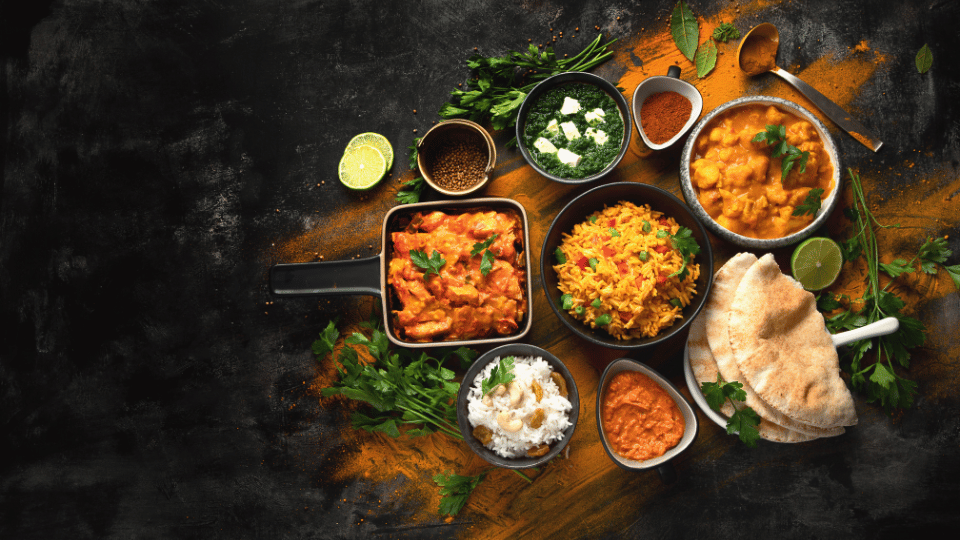What Makes Indian Food Spicy Indian foods are renowned for their bold and spicy flavors, and it is attributed to the use of various spices and herbs. The primary components that contribute to the spiciness of Indian cuisine include
Chilies
Central to Indian spiceschilies come in various forms, from fresh green chilies to dried red chilies powder. They contain capsaicin, a compound responsible for the heat in peppers

Indian cuisine often relies on intricate spice blends or masalas, which include a combination of spices like cumin, coriander, cardamom, cloves, and more. These blends intensify the overall spiciness of the dishes.

Particularly prevalent in Eastern Indian cuisine, mustard and its oil contribute a unique pungency to dishes, enhancing their overall flavor profile.

Black Pepper
Widely used in Indian cooking, black pepper adds both heat and depth to various dishes, especially in southern and coastal cuisines.
Ginger and Garlic
Besides their aromatic qualities, ginger, and garlic add a hint of spiciness to many Indian dishes. They are often used in paste form or finely chopped to infuse the food with a zesty kick.

Curry Leaves
Commonly found in south Indian cuisine, Curry leaves impart a slightly spicy and citrusy flavor to dishes, enhancing their overall spiciness.

Turmeric
While turmeric is known for its vibrant yellow color, it also contributes a mild warmth to dishes. It is a staple spice in Indian cooking.

Regional Variations What Makes Indian Food Spicy
What Makes Indian Food Spicy Different regions in India have their unique spice preferences, leading to varying levels and types of spiciness. For example, North Indian food may emphasize garam masala, while South Indian cuisine often incorporates more red and green chilies. In summary, the artful combination of these spices and ingredients gives Indian food its characteristics spiciness, creating a harmonious balance of flavors that delights the plate.
Exploring the Rich Indian Cuisine, A Guide to Its Diverse Types
Indian cuisine is abundant with flavors, colors, and aromas, reflecting the country’s diverse culture and culinary traditions Here are a few Indian food varieties.
North Indian Cuisine
- Flavor Palette rich and aromatic, with a focus on dairy ghee, and spices.
- Signature Dishes: Biryani, Butter chicken, Rogan Josh
- Breads: Naan, Roti, Paratha
South Indian Cuisine:
- Spicy and tangy, With extensive use of coconut and curry leaves
- Dosa, Idli, Sambar, Rasam
- Biryani, Lemon Rice, Tamarind Rice
East Indian Cuisine
- Mild and subtly spiced, often featuring mustard oil and fish.
- Manchher jhol, Luchi, Sandesh
- Rasgulla, Sandesh, Chum Chum
West Indian Cuisine
- Spicy and Flavorful, with a Blend of Sweet and Savory
- Pav Bhaji, Vada Pav, Dhokla
- Chaat, Pani Puri, Bhel Puri
Central Indian Cuisine
- Robust Earthy, with a focus on lentils and locally grown grains.
- Dal Bafla, Poha, sabudana khichdi
Street Foods
- Pani Puri
- Bhel Puri
- Aloo Tikki chaat
- Seekh kebab
- Kathi Roll
- Frankie
Summary
What Makes Indian Food Spicy From the spicy indulgence of south Indian curries to the gravies of the north, Indian cuisine is a symphony of taste that captivates the senses. Whether you are savoring the delicate flavor of East India or relishing the street food delights from every corner, the diversity of Indian foods is a testament to the country’s culinary powers.

